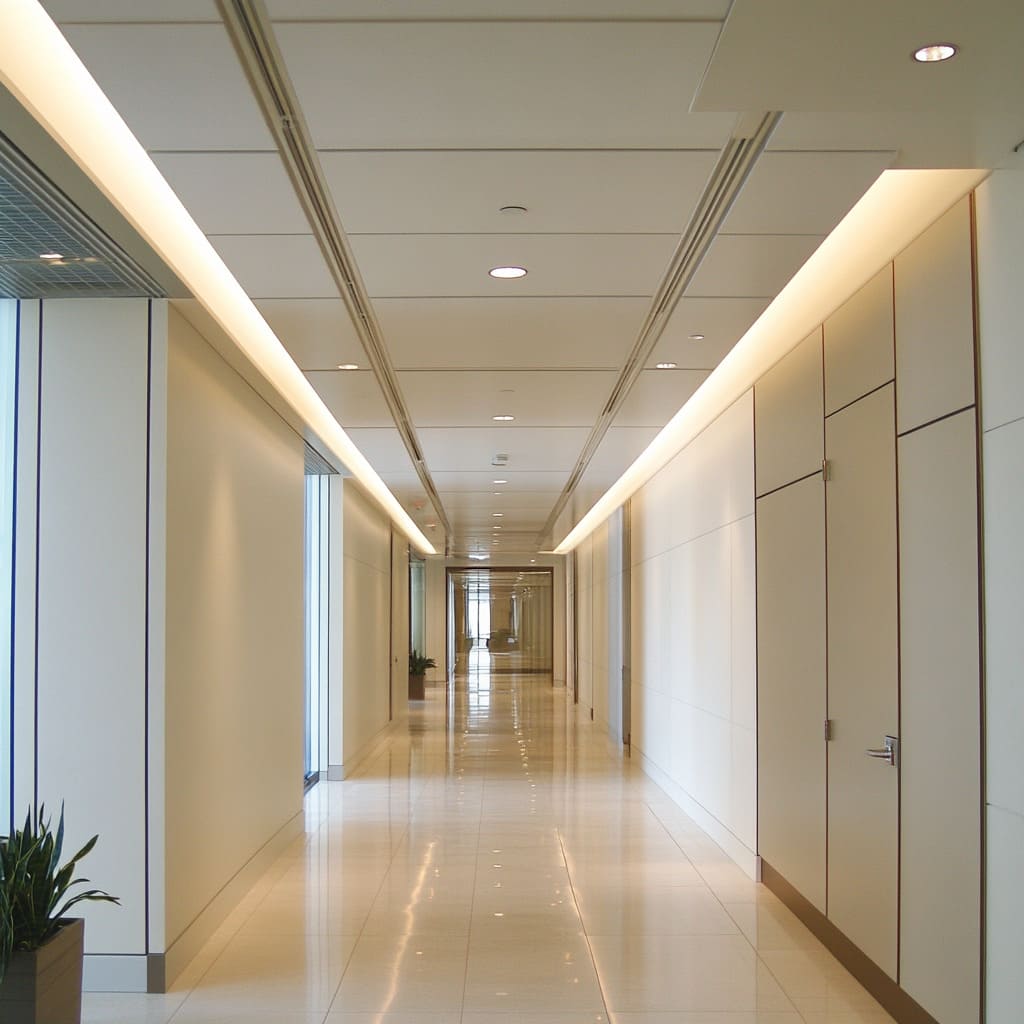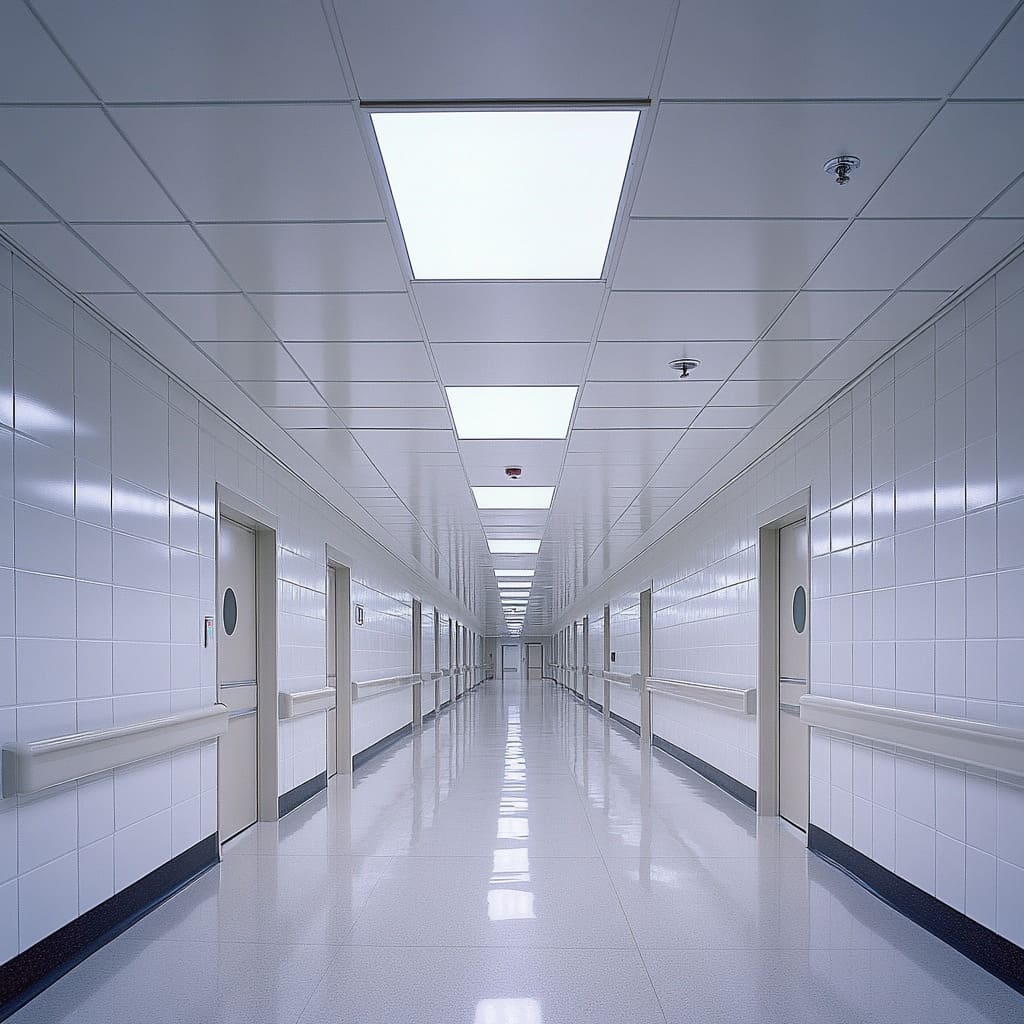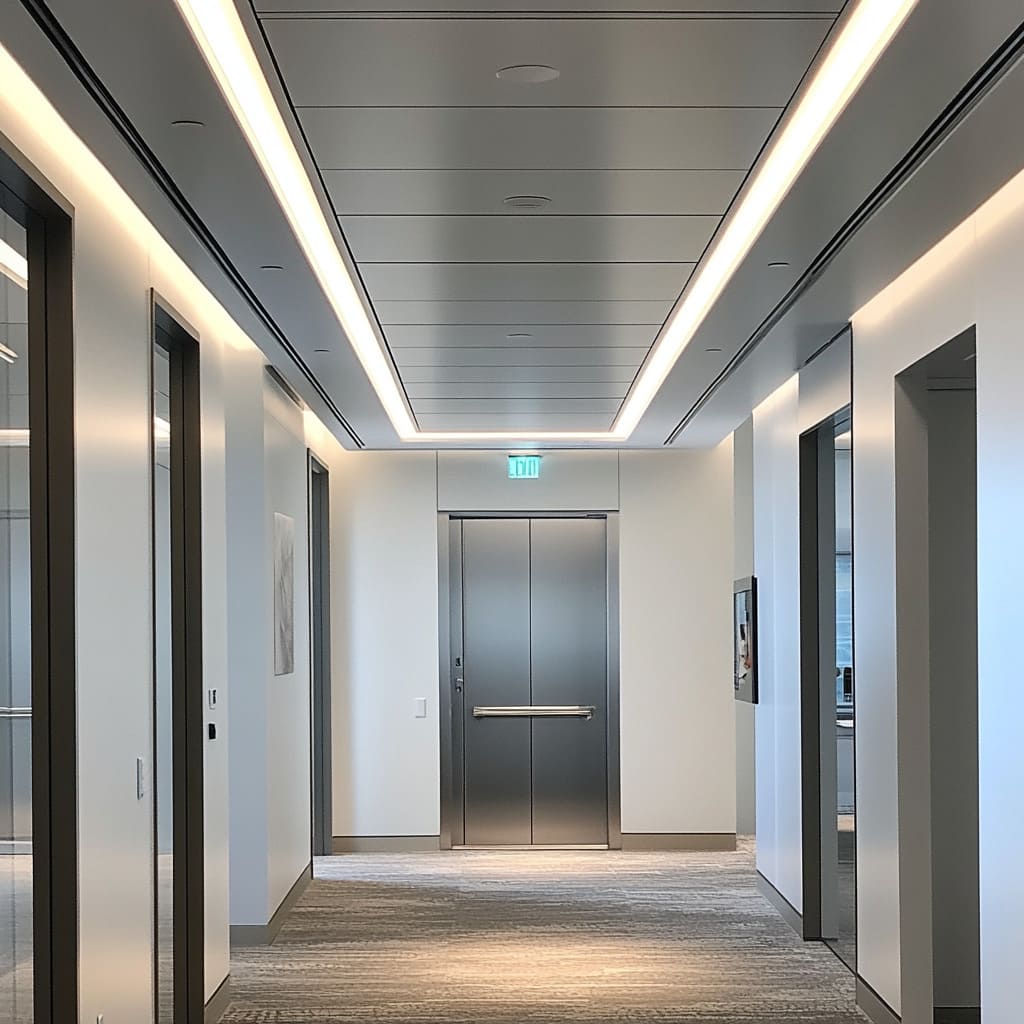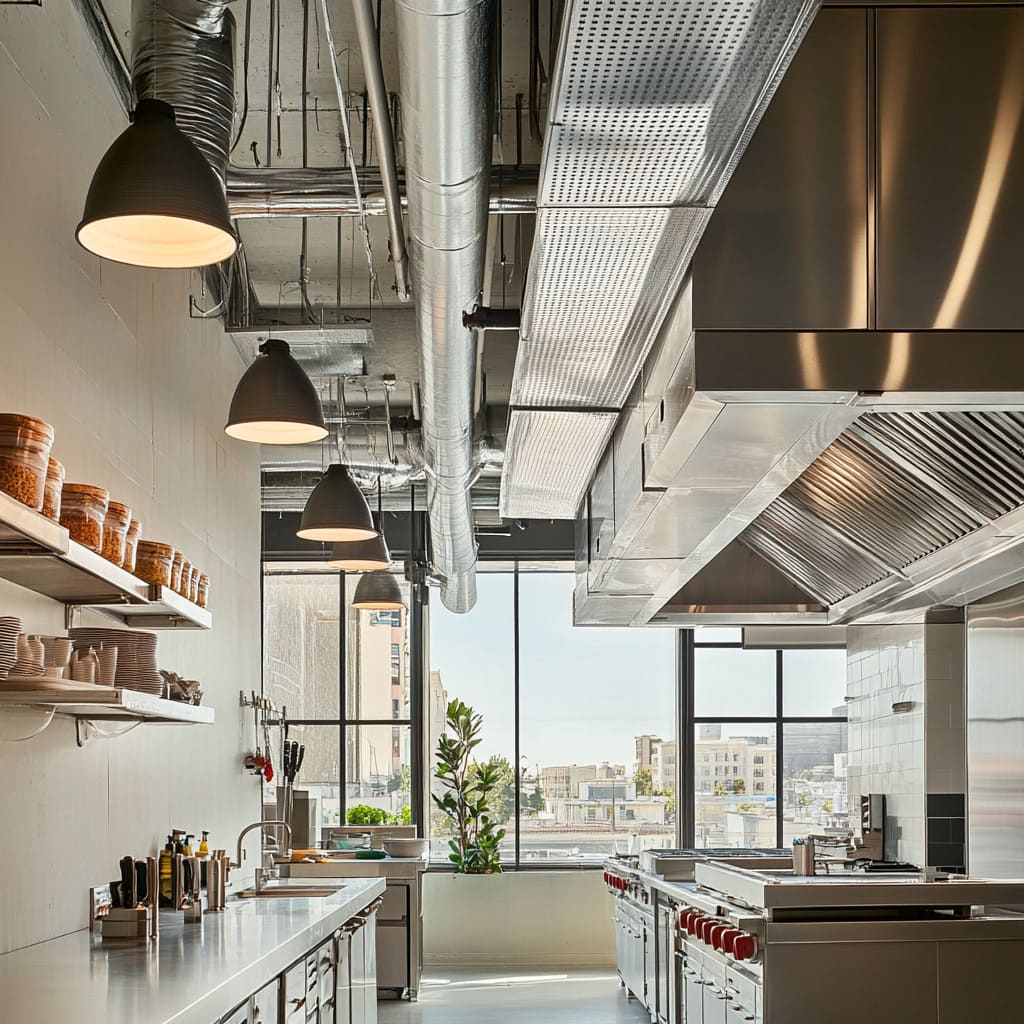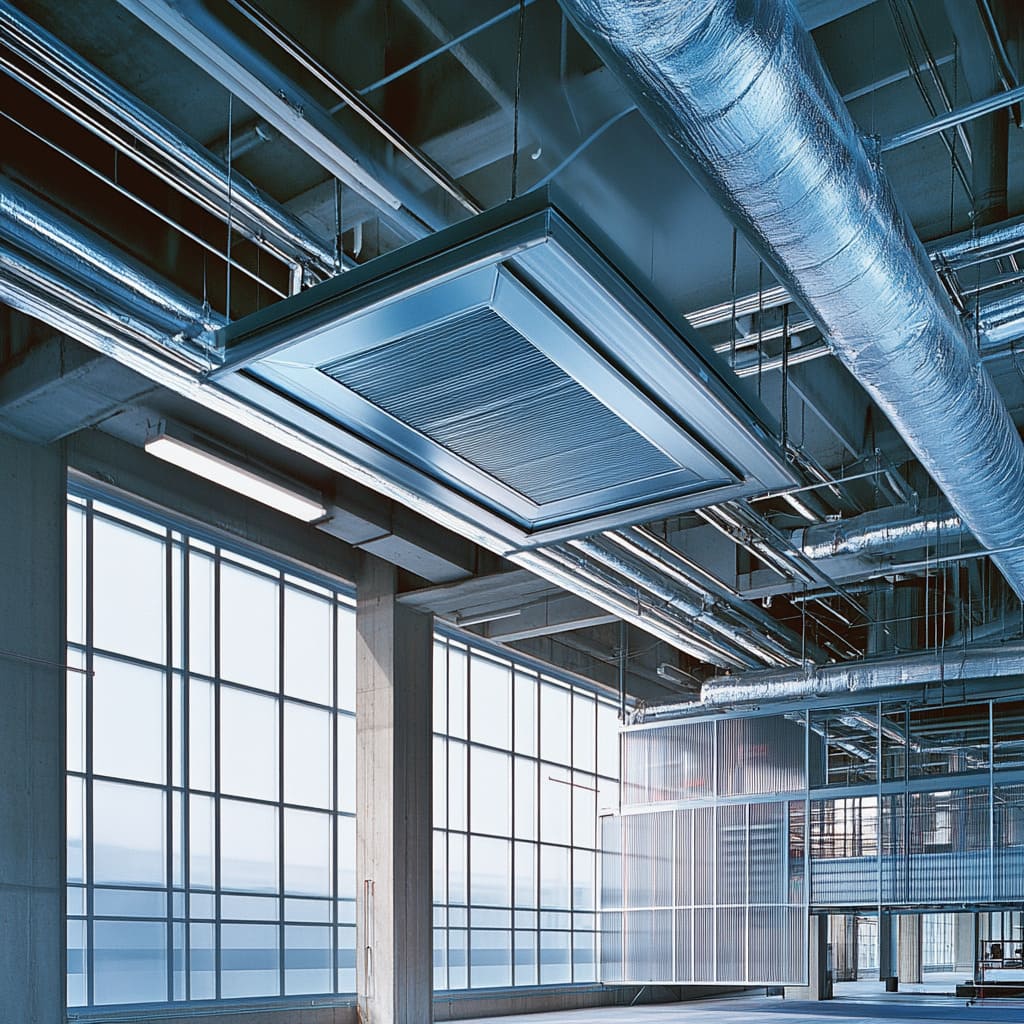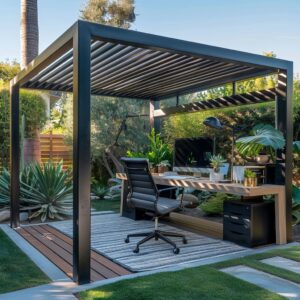The inconvenience and potential dangers of accessing utilities in ceilings can be a real headache. Balancing on rickety ladders while cutting through drywall or removing ceiling tiles risks personal injury, property damage, and costly repairs.
Ceiling access doors offer a discreet and efficient solution for accessing utilities in residential, commercial, and industrial settings. This article will explore the different types, features, benefits, uses, and factors to consider when selecting a ceiling access door.
5 Main Types of Ceiling Access Doors
Ceiling access doors are panels that provide easy and safe access to utilities and concealed spaces above ceilings. They are typically installed in attics, crawl spaces, and roof voids for maintenance, repairs, and inspections.
Various types of ceiling access doors are available, each with unique features and applications:.
Flush Ceiling Access Doors
Flush ceiling access doors sit level with the ceiling surface, combining aesthetics and functionality. When closed, these solutions blend seamlessly with the surrounding ceiling, making them ideal for residential and commercial spaces where visual appeal is necessary.
This sleek option is often used in high-end offices, hotels, or homes with minimalist designs.
Recessed Ceiling Access Doors
For ultimate camouflage, recessed ceiling access doors feature a slight inset that allows for the addition of ceiling materials. This clever design enables the door to be finished with tiles or drywall, perfectly matching the surrounding ceiling.
Opt for these versatile doors for spaces requiring frequent access while maintaining a cohesive look.
Glass Fiber Reinforced Gypsum Ceiling Access Doors
Glass fiber reinforced gypsum ceiling access doors—like the GFRG-R ceiling access door—are a durable, lightweight option. They are constructed with a gypsum core reinforced with glass fibers, providing excellent strength and weather resistance.
They suit residential and commercial applications, particularly where heat and moisture are a concern.
Gasketed Ceiling Access Doors
When environmental control is crucial, gasketed ceiling access doors rise to the challenge. These doors feature a rubber seal around the frame, providing an airtight and dust-tight barrier.
Hospitals, laboratories, and food processing facilities often use gasketed access doors to maintain cleanliness and prevent contamination.
Fire-Rated Ceiling Access Doors
Fire-rated ceiling access doors are important for a building’s structural integrity. Constructed with materials that withstand high temperatures, these doors delay the spread of flames and smoke between building spaces for a specified period.
Many commercial and multi-unit residential buildings incorporate fire-rated doors to meet building codes.
Features of Ceiling Access Doors for Discretion
Ceiling access doors can blend seamlessly with the surrounding environment, maintaining a visually appealing appearance. Here are some key features that contribute to their discreetness:.
Flush Mounting Options
Many ceiling access doors have flush mounting options, allowing them to be installed flush with the ceiling surface. This design eliminates any unsightly protrusions and creates a clean look.
Paintable Surfaces
Ceiling access doors are typically finished with a paintable or customizable surface, easily matching the existing ceiling color and texture. This customization ensures that the door blends seamlessly into the surrounding environment and is virtually indistinguishable when closed.
Concealed Hinges and Latches
Ceiling access doors often feature concealed hinges and latches to enhance their discreet appearance. These hidden mechanisms eliminate any visible hardware that could detract from the aesthetic.
Concealed hinges and latches also contribute to the door’s durability and ease of use.
Benefits of Installing Ceiling Access Doors
In addition to providing discretion, installing ceiling access doors and panels offers several other advantages:
Improved Accessibility
Ceiling access doors provide easy and convenient access to utilities, making maintenance tasks more efficient. Technicians can quickly reach plumbing, electrical, or HVAC systems without damaging the surrounding structure each time.
This improved accessibility saves time and effort while minimizing disruption to building occupants.
Enhanced Safety
Regular inspections and maintenance of utilities are important for ensuring safety and preventing potential hazards. Ceiling access doors make it easy to access and inspect these components, allowing for early detection and resolution of any issues.
This can help to prevent fires, electrical problems, and other safety risks.
Security
Some ceiling access doors have enhanced security features, such as tamper-resistant latches, reinforced frames, and locking mechanisms. These features help to protect sensitive areas from unauthorized access, providing additional security for any building.
Energy Efficiency
Certain ceiling access doors are airtight, helping to maintain the building’s insulation and reduce energy loss. This contributes to lower cooling and heating costs and better indoor air quality, creating a more energy-efficient and comfortable environment.
Cost Savings
While the initial cost of installing ceiling access doors may be higher than simply cutting holes in the ceiling, the long-term cost savings can be significant. They contribute to a positive return on investment by reducing maintenance costs, enhancing energy efficiency, and increasing property value.
Factors to Consider When Choosing Ceiling Access Doors
Selecting the right ceiling access door is crucial for ensuring optimal functionality, safety, and aesthetics in your building. Several key factors should be taken into account when making this decision:.
Material and Durability
The material of the access door affects its durability and suitability for different environments. Common materials include steel, aluminum, and glass fiber reinforced gypsum.
Steel doors are generally the most durable and corrosion-resistant, making them suitable for outdoor applications or areas with high humidity. Aluminum doors, on the other hand, are lightweight and easy to install.
Still, they may not be as durable as steel. Meanwhile, glass fiber reinforced gypsum doors are a good option for indoor applications as they are lightweight and appear similar to drywall.
Location and Environment
The door’s placement is an important factor in the selection process. Indoor installations often prioritize aesthetics, while outdoor applications require weather-resistant materials and seals.
For areas exposed to moisture or extreme temperatures, such as pool areas or industrial kitchens, choose doors designed to withstand these conditions without compromising their integrity or functionality.
Utility Requirements
Assess the size and weight of the equipment that needs to be accessed through the door. Ensure the door is large enough to accommodate the equipment and support its weight.
Additionally, consider the frequency of access. High-traffic areas benefit from more durable and easy-to-operate models that withstand repeated use.
Security Features
In areas requiring restricted access, such as server rooms or sensitive storage spaces, prioritize doors with enhanced security features. Look for options with tamper-resistant latches, reinforced frames, and robust locking mechanisms to prevent unauthorized entry and protect valuable assets or information.
Aesthetic Considerations
Think about the access door’s visual impact. Seek options that can seamlessly blend with existing finishes and materials.
Some doors offer paintable surfaces or the ability to insert matching ceiling materials, ensuring they complement the overall design and remain as unobtrusive as possible.
Fire-Rating Requirements
Access doors installed in a fire-rated ceiling must comply with specific fire codes. Ensure the chosen door meets the required fire rating for the building and local codes.
Applications of Ceiling Access Doors
Ceiling access doors have a wide range of applications. They have different uses in residential, commercial, and industrial settings:.
Residential Settings
In residential spaces, ceiling access doors are commonly used for attic access, providing a convenient way to store seasonal items or access insulation. They are also essential for maintaining HVAC systems and plumbing, allowing for easy inspection and repair.
Commercial Spaces
Ceiling access doors benefit commercial spaces such as offices, retail stores, and restaurants. They enable quick maintenance of electrical systems, HVAC units, and security equipment while ensuring code compliance.
These doors also allow discreet access in areas where maintaining a polished appearance is crucial.
Industrial Facilities
These access doors are important for safety and efficiency in factories, warehouses, and other industrial settings. They provide access to overhead equipment, ventilation systems, and sprinkler systems, allowing for regular inspections and maintenance.
Conclusion
Ceiling access doors offer a discreet, efficient, and safe solution for accessing utilities in various settings. To select the ideal model, consider the material, location, utility requirements, security, aesthetics, and fire rating.
From improving accessibility and enhancing safety to reducing energy costs and increasing property value, ceiling access doors provide a valuable investment for residential and commercial properties.

